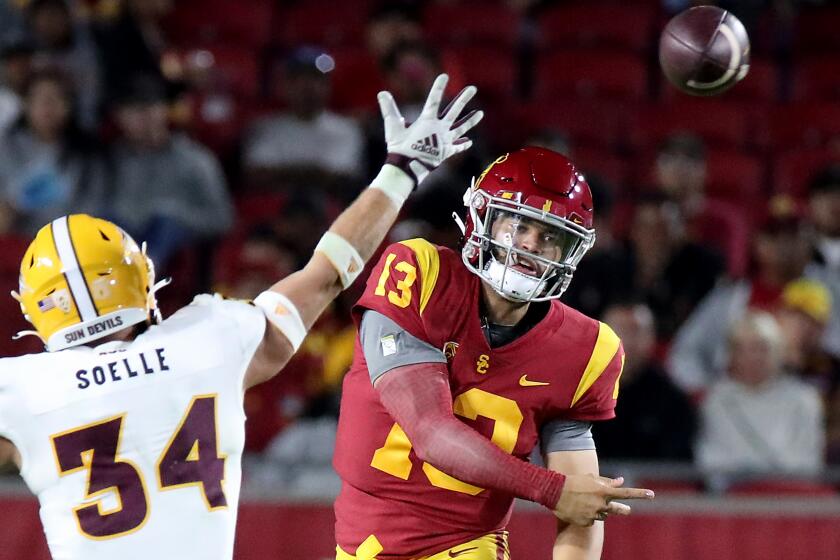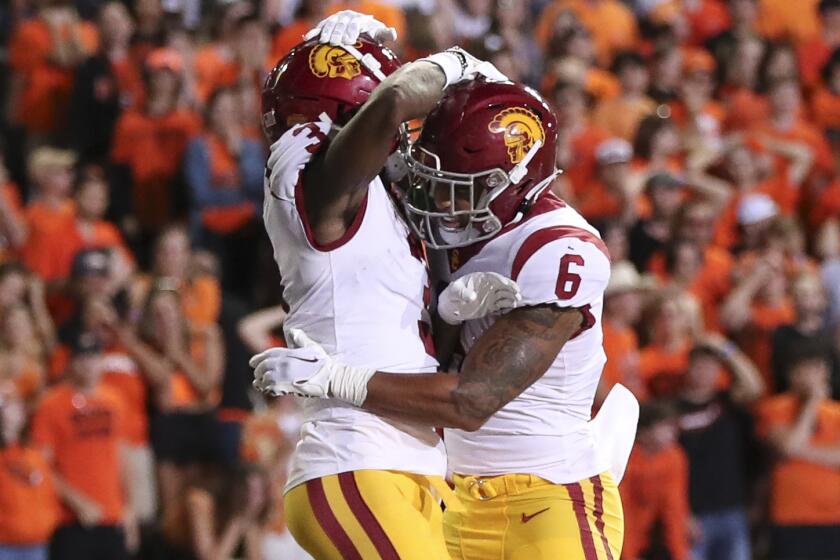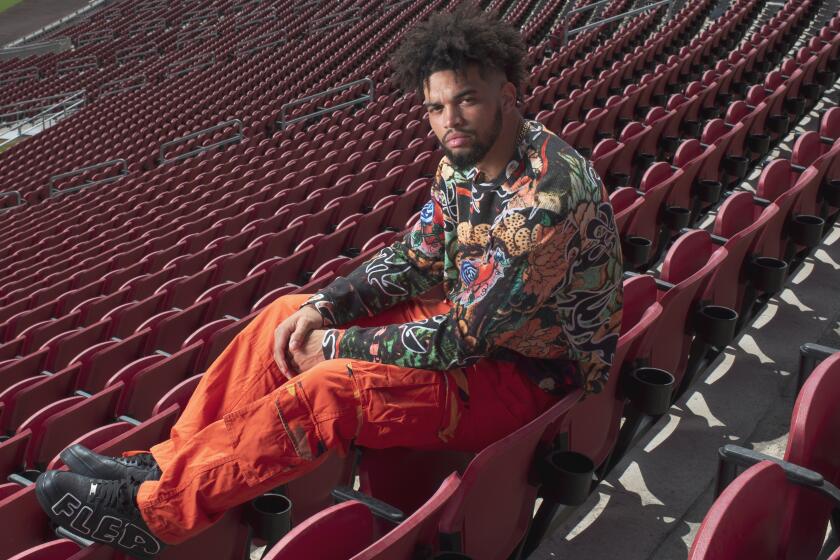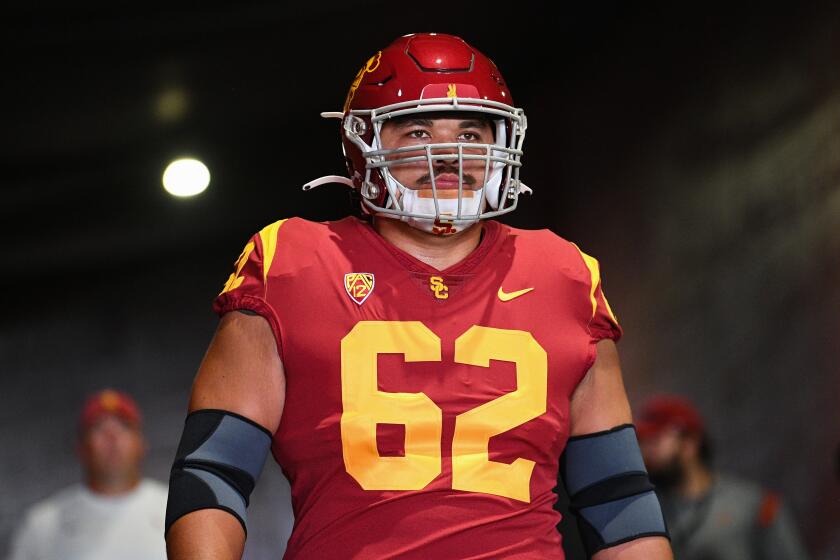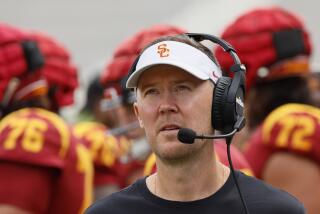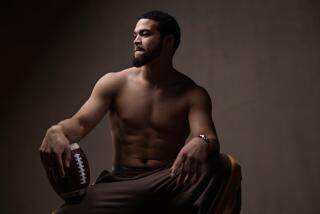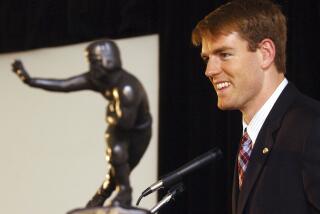Column: USC star Caleb Williams rebounded against Arizona State. Is he ready for bigger tests?
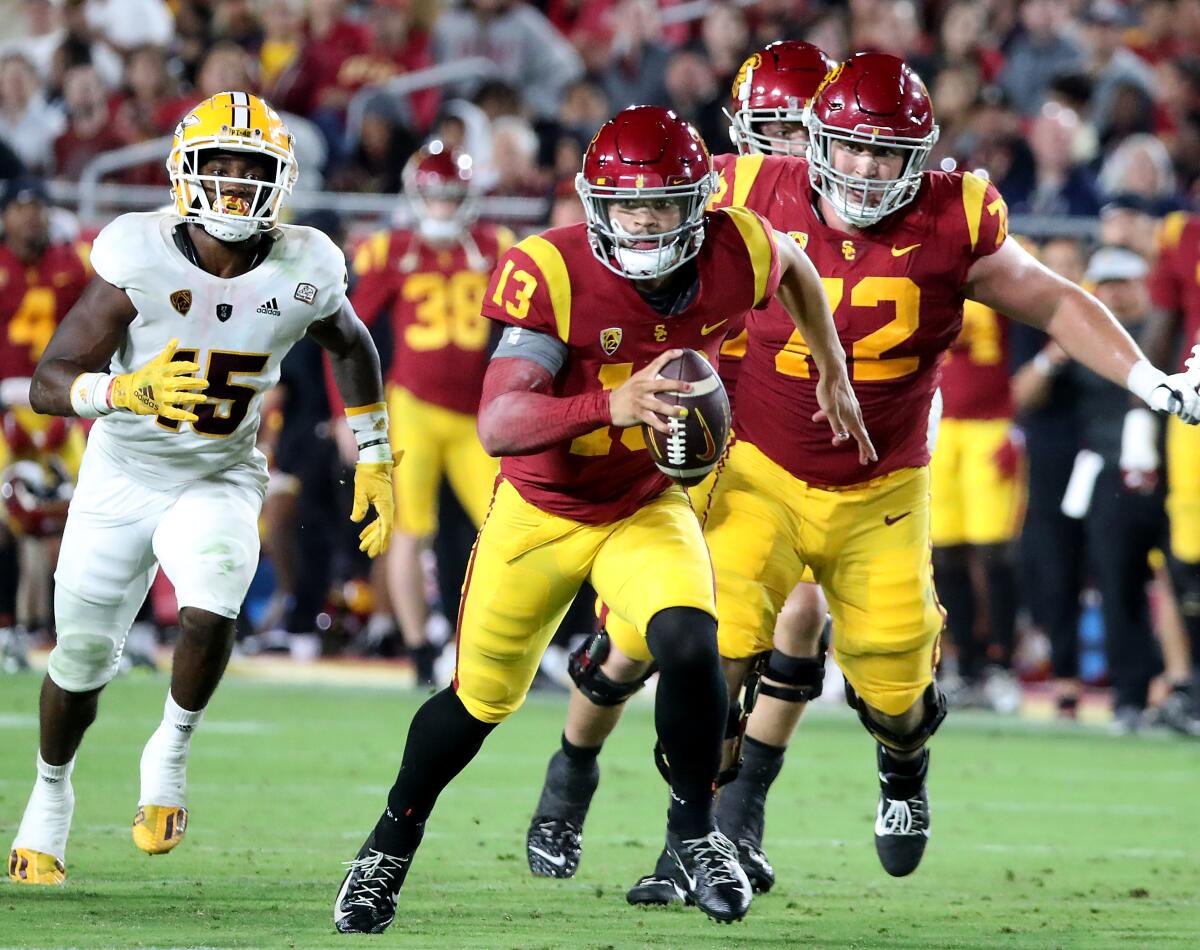
Caleb Williams is the kind of player who can make an entire stadium “ohhhh” multiple times a game.
By spinning out of a certain sack. With a jump pass to the far sideline. With throws on the run to the back of the end zone.
Then there was this, the most spectacular of five-yard runs near the end of the first half of USC’s 42-25 victory over Arizona State on Saturday night, during which he evaded a defender with a pump fake and a spin move, after which he came to a sudden stop, sending another aspiring tackler by him out of bounds.
After struggling against Oregon State, USC quarterback Caleb Williams put on a show in a win over Arizona State, but questions remain about the Trojans’ defense.
Williams is electric.
He is also just 19 years old.
If his four-touchdown performance against the Sun Devils showcased his breathtaking gifts, the week preceding it offered evidence of his relative inexperience.
Now, his midterms are coming up.
The next two weeks will be telling about where Williams is, both as a quarterback and a person.
His ability to read defenses and make throws under pressure will be tested.
So will his maturity.
“He’s ready,” coach Lincoln Riley said.
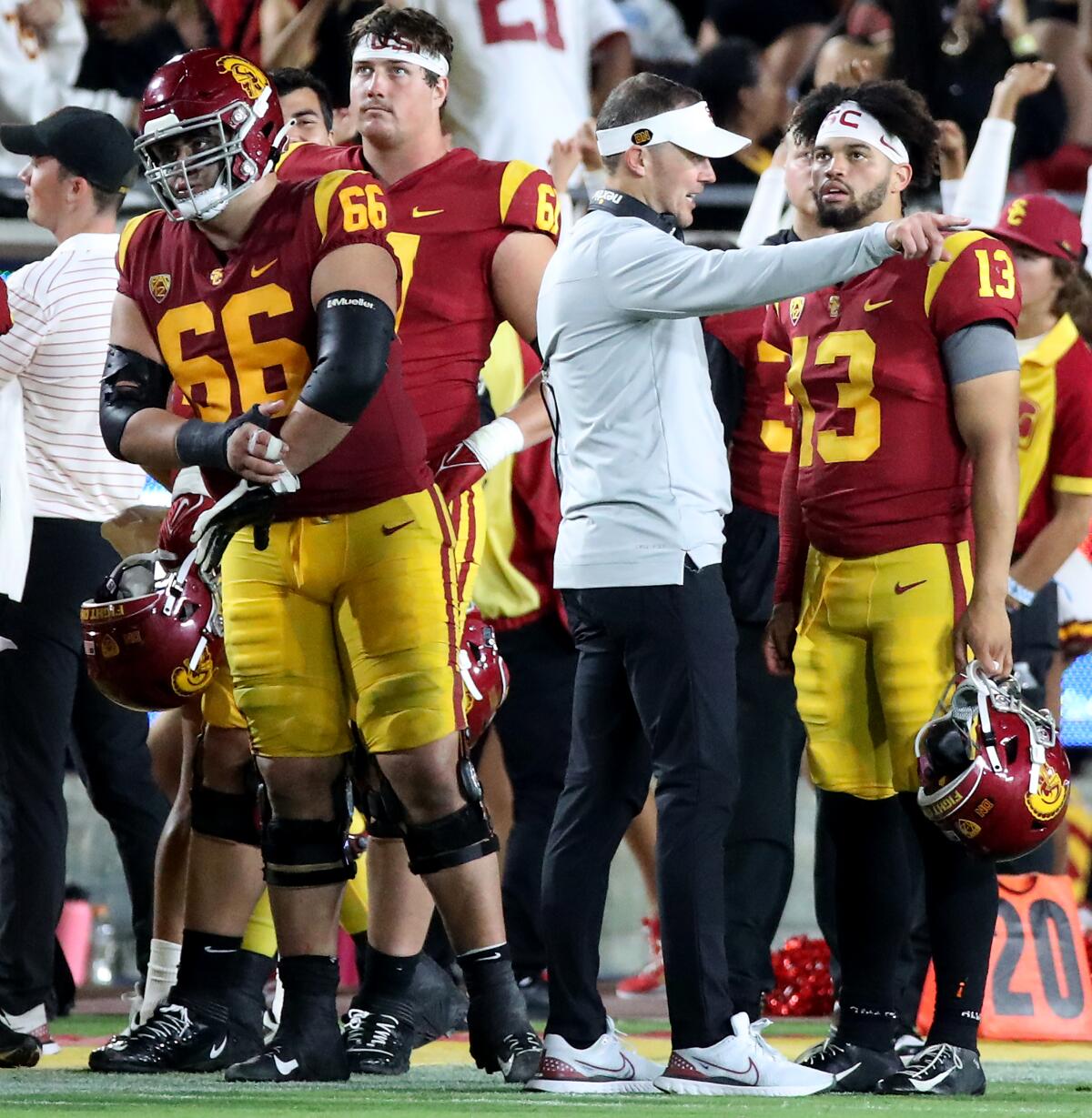
The Transfer Portal Trojans will be taking on two of the Pac-12’s best defenses during their next two games, hosting Washington State on Oct. 8 and visiting defending conference champion Utah a week later.
Washington State gave up 44 points in a loss to No. 13 Oregon two weeks ago but has allowed an average of fewer than 12 points during its other four games.
Since dropping its season opener to Florida, No. 12 Utah has given up a combined 43 points during its past four games. Utah was a 42-16 winner over Oregon State, which gave USC a scare last week.
USC’s 17-14 win in Corvallis was a Rorschach test of sorts. Williams played his worst game statistically — he completed only 16 of 36 passes — but orchestrated a comeback drive in the final minutes to salvage USC’s season.
Oregon State fans howled struggling USC was overrated, but coach Lincoln Riley and his Trojans showed their grit during a big comeback road win.
Whether Williams made the game unnecessarily difficult or saved the night was in the eye of the beholder. What was unquestionably a bad look for him was when he no-showed at the postgame news conference. He was also a last-minute scratch from his scheduled midweek media session.
“I had a few things that came up during the week, so I just had to skip it and go forth,” Williams said. “Now, I’m here.”
Riley added, “Turns out these guys actually have school, too.”
In the days before college athletes could be compensated for their names, images and likenesses, Williams’ amateur status and age would have granted him a free pass.
Except Williams isn’t just a student-athlete. He is an active partner in college football’s money-making venture, enlisting the help of Smith & Company, a strategic marketing and communications firm.
Caleb Williams and his father share the strategies they have used to put the USC quarterback in the best position to win on and off the field.
Williams is featured on a television commercial for bottled water. He’s made a digital advertisement for premium headphones.
He didn’t have a problem speaking during spring practice when he was courting endorsement deals. He has spoken so much that Riley boasted earlier in the week about how USC “made him as available as any player in the country, probably, in our time here.”
So why the sudden shyness?
The problem wasn’t that the world didn’t hear from a teenager with a handful of collegiate starts. The problem was that whatever the actual reasons for his temporary silence, Williams looked as if he went into hiding as soon as he encountered adversity. And, coincidentally or not, he emerged right after passing for 348 yards and rushing for 44 more.
The question now is whether his youthful shoulders are ready to bear the burdens of playing quarterback at USC in the era of NIL deals and social media scrutiny.
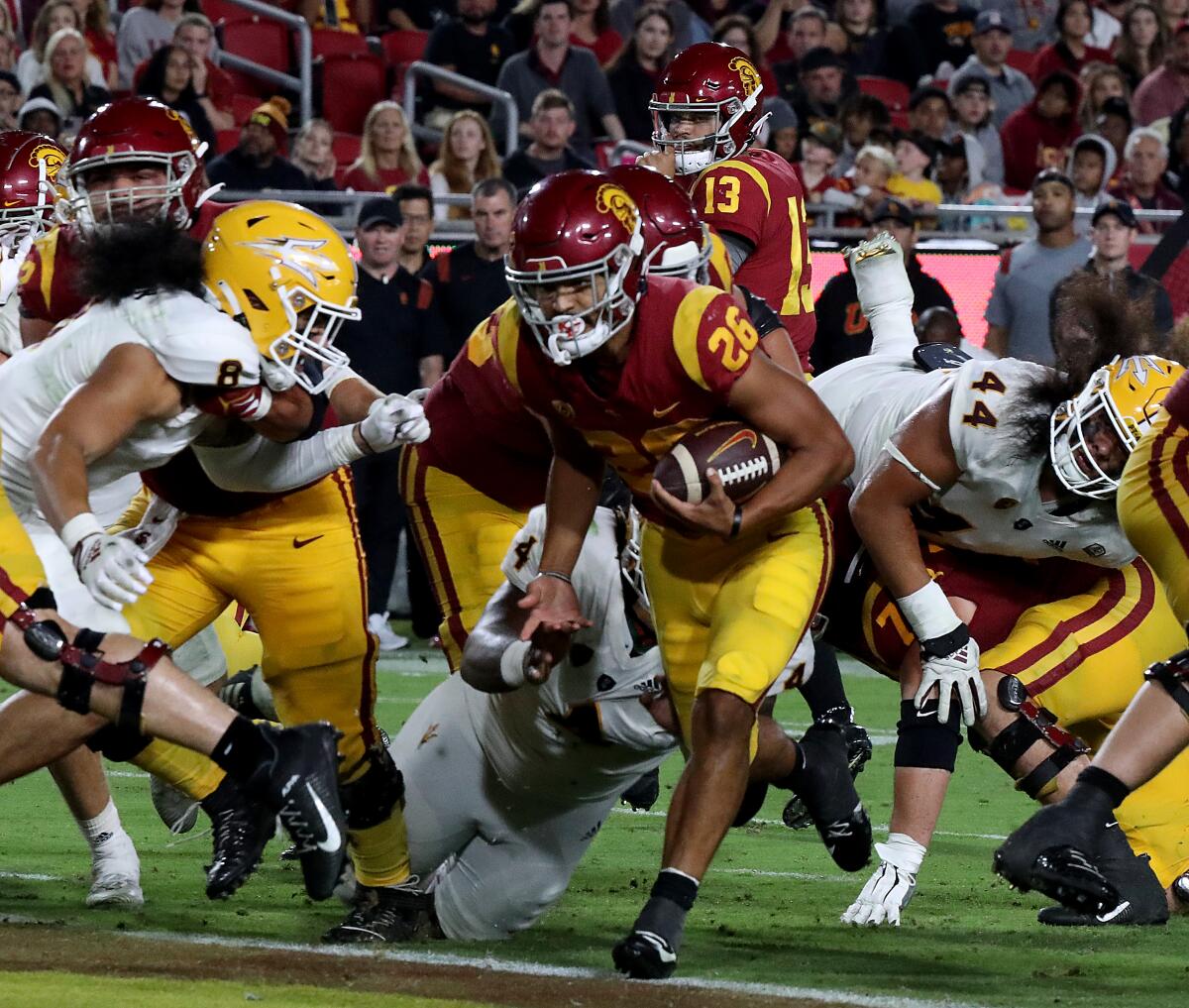
“You’re not going to be perfect every day, and I think that’s what people expect of him: perfection,” running back Travis Dye said. “He’s reaching toward that, but it’s just not gonna happen. It’s football.”
So, what if he doesn’t play well against Washington State or Utah? Will he disappear again after the game? What will NFL teams think?
But the upcoming games are as much opportunities as they are trap doors.
Williams could lead the Trojans to victories that would keep alive their championship ambitions. He could further elevate his profile as a product pitchman.
The way he responded after the Oregon State game pointed to him being able to do so.
USC coach Lincoln Riley called Brett Neilon leading a surge behind Caleb Williams for a key fourth-down conversion one of his favorite plays ever.
Asked what he looked to improve from the previous week, Williams replied, “Being more consistent with my footwork, the basics. It always normally comes back to the basics. Went back and I didn’t like the way some of my football throughout the last game was, so I was trying to be more consistent with that.”
And he was.
But doing that against an Arizona State team that is now 1-4 isn’t the same as doing it against a team with a defense that can actually stop someone.
He won’t be the first 19-year-old to take on this challenge, but he might be the first 19-year-old to be judged by this new set of criteria. For his sake and for USC’s, he better be ready.
More to Read
Go beyond the scoreboard
Get the latest on L.A.'s teams in the daily Sports Report newsletter.
You may occasionally receive promotional content from the Los Angeles Times.

